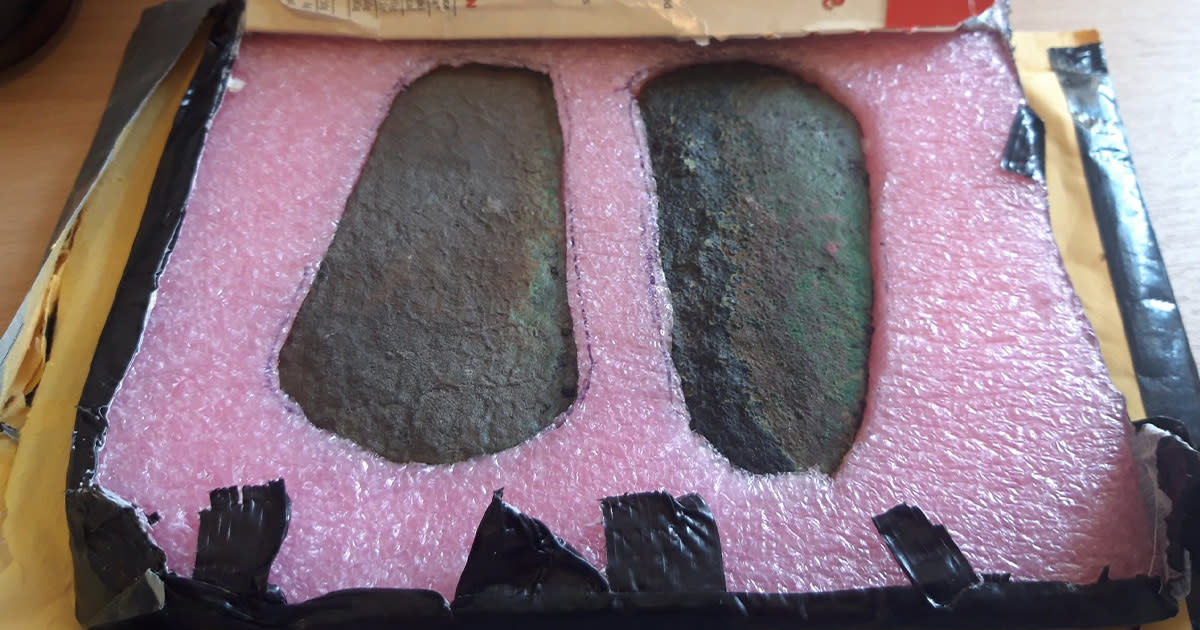Museum Stunned When Someone Anonymously Mails in Two Ancient Artifacts

Weathered Weapons
The National Museum of Ireland received an absolute godsend of a find last month after someone anonymously sent the institution a pair of early Bronze Age axeheads believed to be over 4,000 years old — an archaeological windfall that experts at the museum have hailed as "significant," as it offers a "glimpse into Ireland's distant past."
Whoever found them did their due diligence. The NMI gratefully noted in a statement that the flat axeheads were "thoughtfully" packaged inside a cardboard box originally used to hold breakfast foods, with foam padding cut to their exact shapes.
The sender also included a letter, but provided little information beyond stating that the artifacts were discovered using a metal detector in the Westmeath area — which is a big county, so not much of a lead — and that they wanted the axeheads to be conserved by the museum.
Now, the NMI is appealing for the sender to come forward, in hopes of learning more about these ancient artifacts as part of an international study that aims to trace the origins of the metals used.
"We are thrilled about the discovery of these Early Bronze Age axeheads, but to truly understand their significance, we need to know where they were found," said NMI's assistant keeper of Irish Antiquities Matt Seaver in the statement.
Context Needed
The museum dated the axeheads to around 2150 to 2000 BCE, which would mean they were made at the dawn of the Bronze Age — or what is sometimes referred to as the Chalcolithic, when copper was first being smelted, before it would eventually be combined with tin to make bronze.
Seaver told the Irish outlet RTÉ News that the "beautiful" axeheads were found together, which is an important detail, he said. They were "among the earliest metal axes to have been used in Ireland and the metals to make them may have come from somewhere like the copper mine in Ross Island in Co Kerry," he added.
Despite their significance, however, there's only so much archaeologists can learn without knowing exactly where the axeheads were discovered. Explained Seaver to RTÉ: "An object on its own is valuable in one sense, but an object in its context tells us something about where and why these objects were used."
"For instance," he added, "in a bog, in a river or in proximity to another monument. Things that gave these objects meaning were where they were placed in the landscape."
"Hoards or collections of objects," the museum said, "were often deliberately placed in specific locations for reasons that could range from ritualistic to supernatural."
With all that being said, the museum is really banking on whoever found these axeheads to come forward. The likely reason they've chosen to stay anonymous is because of a law restricting the use of metal detectors to search for archaeological objects, Seaver told RTÉ.
No one's in trouble, though, and the museum wants the sender to know that any tips "will be treated with the utmost confidentiality and used solely to verify the find location and its circumstances."
More on archaeology: Scientists Detect "Anomaly" Underground Near Great Pyramid

